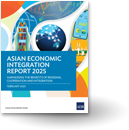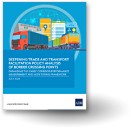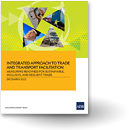Asia’s regional financing woes are exposed during COVID-19
Compared to Asian economies’ strong links in regional trade and value chains, Asia’s intraregional cross-border capital flows are strikingly low — leading to the region’s heavy reliance on financing from outside of the region. In 2019, Asia’s intraregional investments accounted for just 17.9 and 19.9 per cent of its total debt and equity investments, respectively.
This is certainly an increase from earlier years, with both figures having grown steadily from 7.8 and 11.7 per cent respectively since 2001. Yet, more than 80 per cent of the region’s portfolio investments are still being made in assets outside Asia. With a huge portion of its regional capital being invested outside the region, Asia continues to rely on volatile non-resident portfolio investments, instead of regional ones, as its key financing sources.
The COVID-19 pandemic, with its twin health and economic crises, has exposed the vulnerabilities in this financing arrangement. The rapid withdrawal of capital from Asia in the early months of the outbreak is a reminder of the region’s continued dependence on non-resident capital.
The viral outbreak set off a steep decline in regional asset prices, in turn triggering large non-resident capital outflows, though they were short-lived due to quick action from the authorities. The phenomenon mimicked patterns seen during the 2008 global financial crisis and the 2013 ‘taper tantrum’, but what was striking this time around was the sheer speed of the withdrawal of capital.
According to data from the Institute of International Finance, non-resident equity flows to emerging Asia dropped by US$13 billion in March 2020 and another US$17 billion in April. The region’s debt investments fared relatively well, quickly rebounding by a US$10 billion increase in non-resident flows in April, after suffering a US$7 billion withdrawal in March. The trend since May has been mixed, though the region shows largely net positive flows in debt investment. Global investors retained their appetite for Asian investments, due in part to the still sizeable interest rate gaps that favour Asian bonds over those in advanced economies elsewhere.
Swift policy responses across Asia and elsewhere were behind the quick resolution of financial market jitters and the restoration of portfolio investment inflows, helping to ease liquidity conditions and restore investor confidence. Some central banks, including several in Asia, implemented direct asset purchases to support monetary policy and market liquidity.
Still, the March episode of capital market jitters in Asia was a clear wake-up call on the importance of stable intraregional financial flows. Intraregional investments support capital increases by firms under financial strain and debt financing for both governments and corporations. Regional financing helps the region weather economic crises by mobilising essential working capital and opening up fiscal space to cope with crisis fallout while limiting exposure to excessive exchange rate risks.
Many governments in Asia are actively pursuing capital market development, but more action is needed to attract intraregional portfolio investments.
Asian governments need to further strengthen cooperation on policy, regulation and information sharing fronts. Regional financial cooperation is moving ahead, but slowly. This is partly due to the varying degrees of capital market development across Asian economies. The recent agreement by ASEAN+3 countries on enhancing the Chiang Mai Initiative Multilateralization, which includes increasing the IMF delinked portion from 30 per cent to 40 per cent, is an important step forward in strengthening the region’s financial safety net.
The region’s financial architecture must also be updated and upgraded. To increase investor confidence, Asian countries need to improve their financial market infrastructure, including their trading systems, information transparency, investor protections and quality of governance. The risks of information asymmetry is more acute for regional investors who cannot diversify their portfolios and pool their risk as much as global investors can. To attract more intraregional investors, regional financial cooperation should aim to establish harmonised information disclosure practices such as reporting standards and credit ratings.
Asian markets should establish hedging mechanisms against foreign exchange risk. Currently, across the region, hedging costs are high while instruments are limited. This not only reduces investment appetite, but also exacerbates financial market volatility in the case of an unexpected shock to the market. To attract intraregional portfolio flows, Asian markets should aim to facilitate hedging across regional local currencies and create policy incentives for regional investors to enter local markets across borders.
The region may never be fully immune from the impact of events such as the COVID-19 pandemic. Nevertheless, building stronger intraregional financing mechanisms would provide a crucial buffer against financial market turbulence and pave the way for a stable economic recovery.
Original article was published at the East Asia Forum and duplicated here with permission from the authors. *




